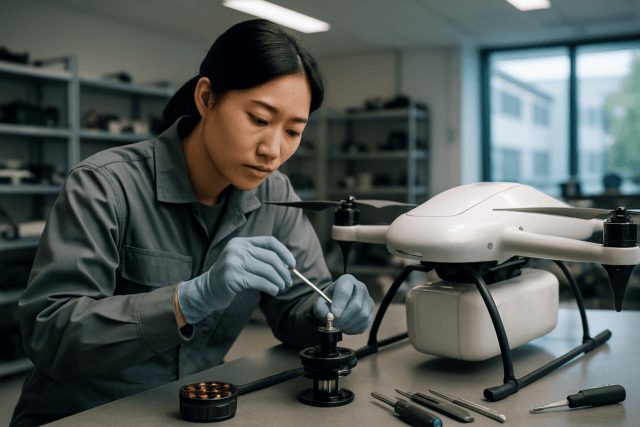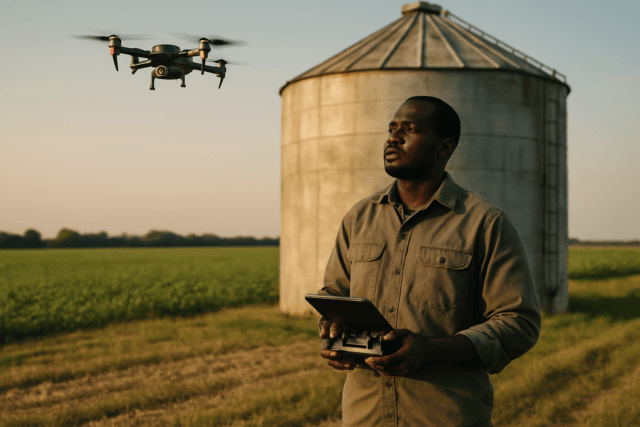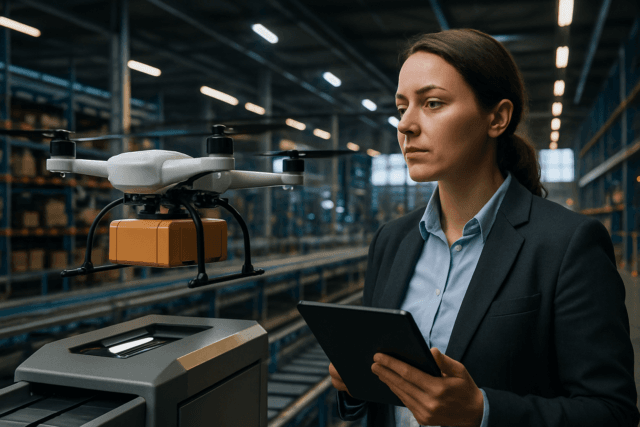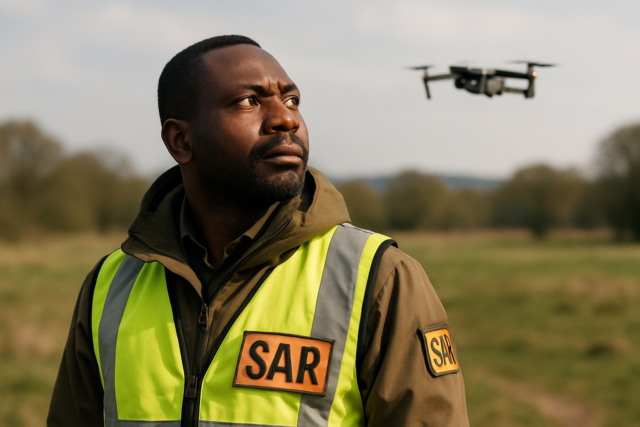The skies above are increasingly populated by unmanned aerial vehicles (UAVs), commonly known as drones, revolutionizing the inspection and maintenance of critical infrastructure. From bridges and pipelines to wind turbines and power lines, drones offer unparalleled efficiency, cost-effectiveness, and safety in assessing vital assets. However, as these sophisticated devices collect vast amounts of sensitive data—including high-resolution imagery, thermal scans, LiDAR data, and GPS coordinates—the cybersecurity landscape surrounding this information becomes a paramount concern. Ensuring the integrity and confidentiality of drone-collected infrastructure data is not merely a technical challenge, but a critical necessity to prevent significant financial losses, reputational damage, and even physical harm to essential services.
The proliferation of drone technology introduces a complex array of cybersecurity challenges that demand vigilant attention from organizations and governments alike. Understanding these risks is the first step toward building robust defense mechanisms.
Key Cybersecurity Vulnerabilities in Drone Operations
Drone systems, encompassing the UAV itself, its communication links, ground control stations, and data storage, present multiple points of vulnerability for malicious actors.
Vulnerable Communication Links and Signal Attacks
The wireless communication links between a drone and its ground control station (GCS) are primary targets for cyberattacks. Many commercial drones rely on standard Wi-Fi or proprietary radio links that may lack robust encryption and authentication protocols, making them susceptible to various forms of interference and interception.
- Passive Eavesdropping: Unauthorized parties can listen in on or capture data during transmission, compromising confidentiality of sensitive information like real-time video feeds or operational telemetry.
- Active Jamming: Attackers can interfere with the drone’s signals, potentially disrupting operations, causing loss of control, or forcing the drone to crash. This involves intentionally blocking communication between the drone and its controller.
- GPS Spoofing: This involves tricking the drone into receiving false GPS signals, which can divert the drone from its intended flight path, lead to the collection of inaccurate location-tagged data, or even cause it to fly into restricted areas or critical infrastructure. GPS signals are often unencrypted and unauthenticated, making them particularly vulnerable.
- Command and Control (C2) Interception: Malicious actors can intercept control commands, potentially taking over the drone’s operations entirely, altering its mission, or using it for harmful purposes such as espionage or sabotage.
Onboard and Stored Data Vulnerabilities
The data stored directly on the drone or on removable media also carries inherent risks. Physical access to a compromised or lost drone can lead to unauthorized data extraction or manipulation. With drones potentially collecting terabytes of data daily, managing this volume securely is a significant challenge. This includes:
- Flight Log Data: Information about network layouts, inspection locations, and critical assets.
- Imagery and Sensor Data: High-resolution images, videos, thermal scans, and other sensor readings that can reveal sensitive details about land use, infrastructure status, or even physical security vulnerabilities.
- Corporate Proprietary Information and Intellectual Property: Data gathered during inspections could expose sensitive business information.
Ground Control Station (GCS) and System Compromise
The GCS and its associated software are critical points of vulnerability. These systems manage mission planning, real-time control, and data processing.
- Malware and Ransomware Attacks: Malware targeting GCS systems can steal sensitive mission plans or collected data, while ransomware can lock drone systems and demand money for their release, causing operational disruptions and financial losses.
- Software and Firmware Exploitation: Flaws in onboard drone software or firmware, as well as in GCS software, can allow attackers to manipulate sensors, disable security features, or gain unauthorized control. Regular updates are crucial to patch these vulnerabilities.
- Weak Authentication and Authorization: Inadequate security measures can allow unauthorized individuals to access drone controls or sensitive data.
AI Manipulation and Autonomous Threats
As drones become more autonomous and integrate artificial intelligence (AI) for navigation and data analysis, new and evolving risks emerge.
- Algorithm Manipulation: Hackers could tamper with AI algorithms, leading to erroneous decision-making, malfunctions, or incorrect data analysis, which could result in flawed scientific research or misinformed policy decisions.
- Navigation Control Weaknesses: Exploiting vulnerabilities in autonomous navigation systems can compromise drone operations and potentially lead to physical disruption or damage to infrastructure.
Supply Chain and Third-Party Component Risks
The globalized supply chain for drone components introduces potential vulnerabilities. Many drone parts are sourced internationally and could contain hidden backdoors or weaknesses introduced during manufacturing.
- Compromised Components: Faulty or infected parts, if integrated into the drone, can undermine the security of the entire system regardless of other precautions.
- Third-Party Access to Data: Drone manufacturers or third-party application vendors may collect and retain sensitive data, including personal data, photos, and videos, raising concerns about who has access to this information and how it is secured.
Consequences of Compromised Drone Infrastructure Data
The implications of cybersecurity breaches in drone infrastructure data extend far beyond data loss, potentially impacting national security, economic stability, and public safety.
- Compromised Critical Infrastructure: Drones are used to inspect power grids, water management systems, transportation networks, and other vital infrastructure. A cyberattack could provide adversaries with detailed insights into vulnerabilities, enabling them to disrupt or sabotage these critical services.
- Espionage and Surveillance: Unauthorized access to drone data can facilitate espionage, allowing foreign adversaries or malicious groups to gather intelligence on sensitive sites, operational procedures, or even military installations.
- Physical Damage and Safety Hazards: Hijacked drones could be used to cause accidents, deliver dangerous materials, or even be weaponized, posing significant risks to surrounding infrastructure and human populations.
- Data Theft and Privacy Violations: Sensitive information collected during inspections could be stolen, leading to intellectual property loss, financial damage, or privacy breaches if personal or identifiable information is exposed.
- Operational Disruption and Financial Loss: Cybersecurity incidents can lead to flight disruptions, operational delays, and significant financial costs due to recovery efforts, regulatory fines, and loss of public trust.
- Misinformed Decisions: Manipulation of collected data can lead to flawed scientific research, misinformed policy decisions, or inaccurate environmental reports, affecting critical decision-making processes.
Mitigating Cybersecurity Risks
Addressing these evolving threats requires a multi-layered and proactive approach, integrating both technological solutions and stringent operational policies.
- End-to-End Encryption: Implementing robust, end-to-end encryption for all data in transit (between drone, GCS, and cloud storage) and at rest (onboard the drone and storage devices) is crucial to protect sensitive information from interception and unauthorized access.
- Strong Authentication and Access Control: Employing strong authentication measures, such as multi-factor authentication, and role-based access controls limits access to drone systems and sensitive data to authorized personnel only.
- Regular Firmware and Software Updates: Consistently updating drone firmware and software, as well as GCS applications, is essential to patch known vulnerabilities and enhance security features.
- Secure Network Configuration: Utilizing secure network configurations, disabling unnecessary services, and avoiding public or unsecured Wi-Fi networks for drone operations helps prevent unauthorized intrusions.
- Physical Security Measures: Implementing tamper detection and prevention mechanisms on drone hardware and components, along with secure hardware design, can deter physical manipulation.
- Supply Chain Security: Organizations should carefully vet drone manufacturers and component suppliers to minimize the risk of embedded vulnerabilities or backdoors.
- Geo-fencing and Emergency Controls: Implementing geo-fencing to restrict drone operations to authorized areas and incorporating emergency kill switches can enhance control and safety in case of a cyberattack or malfunction.
- Comprehensive Logging and Monitoring: Implementing systems for comprehensive logging and real-time monitoring of drone activities and network traffic can help detect security breaches and unauthorized activities promptly.
- Employee Training and Awareness: Regular training for drone operators and associated personnel on cybersecurity best practices, threat recognition, and incident response protocols is vital.
- Regulatory Compliance: Adhering to relevant data protection regulations (e.g., GDPR) and working towards the establishment of unified cybersecurity standards for UAVs is crucial, especially given the current regulatory gaps in many jurisdictions.
As drones become increasingly integral to infrastructure inspection, the cybersecurity risks associated with the vast amounts of data they collect will only grow in complexity and potential impact. A proactive, multi-faceted approach to cybersecurity, encompassing robust technical safeguards, stringent operational procedures, and continuous vigilance, is essential to harness the benefits of drone technology while safeguarding critical infrastructure and sensitive information.





